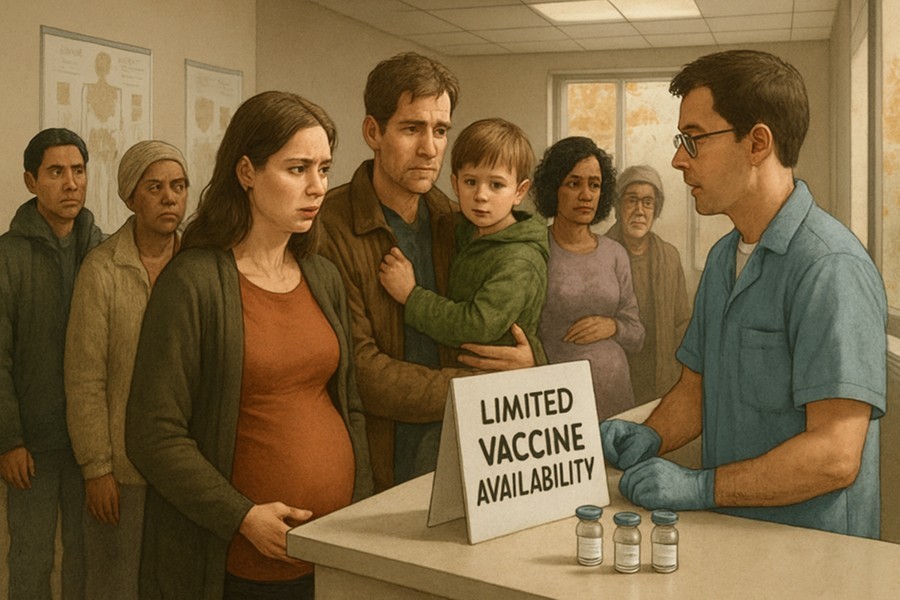
A Closer Look at the COVID-19 Vaccine Rules
With the onset of Autumn and increasing COVID-19 cases, you might be considering getting this year's vaccine. In the past, people from all walks of life could easily access these life-saving shots. However, things have drastically changed this year due to the influence of an intense anti-vaccine campaigner serving as the nation's highest health authority.
Since assuming this position, he has been enthusiastic about disassembling the country's top vaccination system. His efforts have significantly obstructed the availability of crucial shots, including the COVID-19 vaccine. His actions have bypassed all standard federal procedures without providing any evidence-based reasoning for these changes.
How the Changes Were Announced
In a shocking turn of events, this anti-vaccine activist decided to restrict healthy children and pregnant people from receiving shots. Instead of using official federal channels, the announcement was made through a video posted on a popular technology platform. Top officials from the country's leading health agency were caught off-guard and learned about the changes from the video.
Upon hearing the news, medical experts from leading health organizations expressed their concerns. They noted that current data showed that pregnant women and children under two years old are at a higher risk of severe COVID-19. Both groups have since issued documents maintaining the recommendation for these groups to get the COVID-19 vaccine.
Despite the backlash, officials from the country's premier food and drug regulatory agency signaled their intent to change the labels on vaccines. This would limit their availability to people aged 65 and over and those with health conditions that put them at risk of severe COVID-19.
The Expected Process for Vaccine Approval
When there isn't an anti-vaccine activist personally directing federal vaccine policy, health agencies follow a thorough, transparent protocol for approving and recommending vaccinations. Typically, this process begins with the agency responsible for regulating food and drugs, which has both internal scientists and a panel of external advisors to review the safety and effectiveness of the vaccine. This panel then holds a completely public meeting to review, analyze, and discuss the data. They make a recommendation on a potential approval and then the head of the agency can decide to sign off, usually in accordance with internal experts.
Once a vaccine is approved or authorized, it goes to the leading health agency for further evaluation. Internal experts review all the data for the vaccine, along with epidemiological and public health data. A committee of external advisors does the same in a totally transparent public meeting. This committee then makes recommendations on how the shots should be used. These recommendations can provide nuanced clinical guidance on who should receive a vaccine, when, and in what scenarios. The head of the health agency then decides whether to adopt these recommendations and updates the federal immunization schedules accordingly.
What Actually Happened
Shortly after the announcement of COVID-19 vaccine restrictions, the leading health agency changed the federal immunization schedules. The recommendation for a COVID-19 shot during pregnancy was removed. However, for healthy children aged 6 months to 17 years, the agency diverged slightly from the anti-vaccine activist's directive. The updated schedule doesn't revoke access outright; instead, it now says that healthy children can get the shots if there is shared decision-making with the child's doctor.
In a surprising move, the food and drug regulatory agency followed through with its plans to change the labels on COVID-19 vaccines, limiting access to people who are 65 and older and people who have an underlying condition that puts them at high risk of severe COVID-19. This happened without the involvement of the advisory committee that usually discusses and recommends such changes.
Current Access to COVID-19 Vaccines
With these events, access to the COVID-19 vaccine has become chaotic. Here's what we do and don't know about access:
- Before the anti-vaccine campaign, COVID-19 vaccines were available to all people aged 6 months and older. Now, the vaccines are only available to those aged 65 and older or those with at least one underlying condition that puts them at high risk for severe outcomes from COVID-19.
- Who can get a COVID-19 vaccine and where now depends on a person's age, underlying conditions, and the state they reside in.
- As the committee has not set recommendations for the use of the COVID-19 vaccines, access to the vaccines varies across the country.
- In states that allow for broader vaccination authority, people meeting the agency's criteria should be able to get the vaccine at a pharmacy like usual.
- People under 65 with underlying health conditions who want to get their COVID-19 shot at a pharmacy will likely have to do something to confirm their eligibility.
- For those who don't meet the criteria, getting the vaccine would mean a pharmacist or doctor would have to go "off-label" to provide it.
